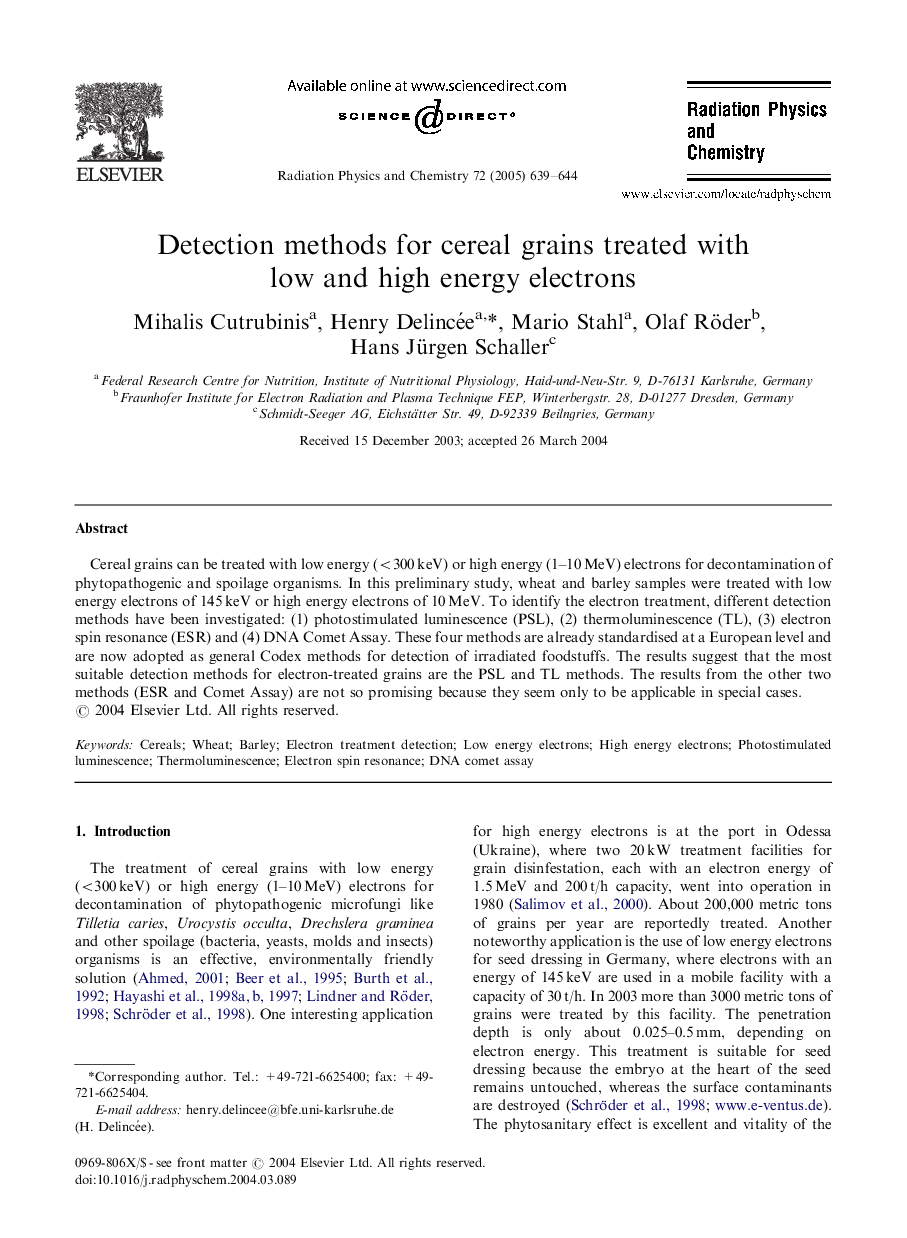| Article ID | Journal | Published Year | Pages | File Type |
|---|---|---|---|---|
| 10732416 | Radiation Physics and Chemistry | 2005 | 6 Pages |
Abstract
Cereal grains can be treated with low energy (<300Â keV) or high energy (1-10Â MeV) electrons for decontamination of phytopathogenic and spoilage organisms. In this preliminary study, wheat and barley samples were treated with low energy electrons of 145Â keV or high energy electrons of 10Â MeV. To identify the electron treatment, different detection methods have been investigated: (1) photostimulated luminescence (PSL), (2) thermoluminescence (TL), (3) electron spin resonance (ESR) and (4) DNA Comet Assay. These four methods are already standardised at a European level and are now adopted as general Codex methods for detection of irradiated foodstuffs. The results suggest that the most suitable detection methods for electron-treated grains are the PSL and TL methods. The results from the other two methods (ESR and Comet Assay) are not so promising because they seem only to be applicable in special cases.
Keywords
Related Topics
Physical Sciences and Engineering
Physics and Astronomy
Radiation
Authors
Mihalis Cutrubinis, Henry Delincée, Mario Stahl, Olaf Röder, Hans Jürgen Schaller,
